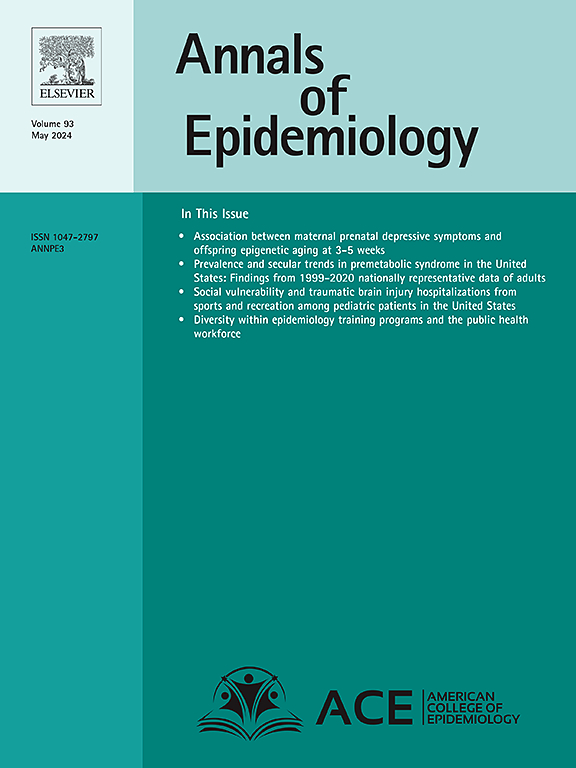Association of preconception maternal glucocorticoid concentrations with sex ratio at birth: Evidence from a prospective cohort study
IF 3
3区 医学
Q1 PUBLIC, ENVIRONMENTAL & OCCUPATIONAL HEALTH
引用次数: 0
Abstract
Purpose
To examine the association between maternal preconception glucocorticoid concentrations and the sex ratio at birth (SRB).
Methods
We analyzed data from 1106 pregnant women in a birth cohort study in Lima, Peru, focusing on singleton live births with complete data for preconception glucocorticoids, newborn sex, and covariates. Hair samples of 6 cm were collected in the first trimester and analyzed using LC-MS/MS to extract cortisol (HCC) and cortisone concentrations (HCNC) from the 3–6 cm hair segment. Baseline maternal characteristics were described using descriptive statistics. Unadjusted and adjusted Poisson regressions assessed associations between preconception glucocorticoids and newborn sex.
Results
Most of the samples were Mestizos, multiparous, and married women. The observed SRB was 0.52 (576 males out of 1106 total births). Adjusted regressions revealed an association between higher preconception HCC and an 8 % reduction in male births (95 % CI = 0.85, 0.99). Quartile comparisons showed a 13 % decline in male births in the highest versus the lowest quartile of preconception HCC, with similar trends seen for HCNC.
Conclusion
The observed SRB aligns with global averages, and the inverse relationship between preconception cortisol levels and male births supports prior evidence linking maternal stress to SRB variation. This study underscores the potential role of maternal stress and hypothalamic–pituitary–adrenal axis function in influencing reproductive outcomes.
孕前母体糖皮质激素浓度与出生性别比的关系:来自前瞻性队列研究的证据。
目的:探讨孕妇孕前糖皮质激素浓度与出生性别比(SRB)的关系。方法:我们分析了秘鲁利马一项出生队列研究中1106名孕妇的数据,重点是单胎活产,包括孕前糖皮质激素、新生儿性别和协变量的完整数据。孕早期收集6 cm的毛发样本,采用LC-MS/MS从3-6 cm的毛发段提取皮质醇(HCC)和可的松浓度(HCNC)。使用描述性统计描述基线产妇特征。未调整和调整的泊松回归评估孕前糖皮质激素与新生儿性别之间的关系。结果:大多数样本为混血、多胎和已婚妇女。观察到的出生性别比为0.52(在1106个新生儿中有576个是男性)。校正回归显示,较高的孕前HCC与8%的男性出生率减少之间存在关联(95% CI = 0.85, 0.99)。四分位数比较显示,孕前HCC的最高四分位数与最低四分位数相比,男性出生率下降了13%,HCNC也有类似的趋势。结论:观察到的SRB与全球平均水平一致,孕前皮质醇水平与男婴出生之间的负相关关系支持了先前有关母亲压力与SRB变化的证据。本研究强调了母体应激和下丘脑-垂体-肾上腺轴功能在影响生殖结果中的潜在作用。
本文章由计算机程序翻译,如有差异,请以英文原文为准。
求助全文
约1分钟内获得全文
求助全文
来源期刊

Annals of Epidemiology
医学-公共卫生、环境卫生与职业卫生
CiteScore
7.40
自引率
1.80%
发文量
207
审稿时长
59 days
期刊介绍:
The journal emphasizes the application of epidemiologic methods to issues that affect the distribution and determinants of human illness in diverse contexts. Its primary focus is on chronic and acute conditions of diverse etiologies and of major importance to clinical medicine, public health, and health care delivery.
 求助内容:
求助内容: 应助结果提醒方式:
应助结果提醒方式:


